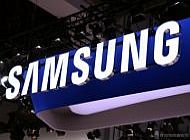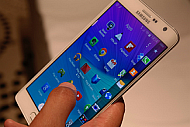Google has a simple policy that all Android manufacturers follow: any Android device will get a software update for 18 months after its launch. That is usually enough to get every flagship device two major updates, something that has been true for all of Samsung's flagship phones since the original Galaxy S took the smartphone world by storm. The Galaxy S III, a device that has sold more than 50 million units, started at Android 4.0, and thanks to Samsung skipping Android 4.2, it now runs Android 4.3. People were expecting it to get KitKat as well, but alas, due to memory issues, Samsung decided to axe the update for its best-selling phone.
Now, we realize that the memory issue could actually be the case here – the Galaxy S III is a flagship device and hence has more software features than mid-range or low-end phones, so adding newer ones over the existing features could have resulted in a very poor experience on the 1GB of RAM that the phone has. It wouldn't be a good move to strip the phone off features to fit KitKat on it, which is supposed to play well with as low as 512MB RAM but only on devices running Google's version of Android, which is minimal and more optimized than Samsung's or any other manufacturer's customized version.
But it's clear that sales is also one reason Samsung is looking to stop updating the Galaxy S III any further, as that would mean it would lose some consumers who would otherwise think of upgrading to a newer device. However, we think it's something the Korean manufacturer needs to rethink and go beyond what Google's policy dictates.
There's a simple reason for that: the Galaxy S III sold 50 million units. That's a huge amount of consumers that are rocking the device, consumers who spent their hard-earned money on a phone Samsung told them is the best thing ever, “designed for humans” and better than that iPhone everyone keeps talking about. For those who bought the device in its second year only got updates for six months, and when you consider the fact that the phone is still available for purchase, there are many who will only be updating to an OS version that early buyers already have.
Compare this to Apple, who managed to update a three year old phone like the iPhone 4 to iOS 7, and you get a good picture of how poor the situation is in Android land. Samsung needs to understand that the only way to keep all your consumers is to provide them with continuous support – in case of the Galaxy S III, those 50 million customers mean more people expect an update than with other phones, but will have no option but to buy a newer device if they want to enjoy the latest and greatest.
Our advice? Well, first of all, stop selling the Galaxy S III and take it off the market. Second, and more importantly, offer a longer support scheme for flagship devices. The 18-month rule is all fine and dandy for an ecosystem where there are a plethora of diverse hardware, but when you're selling millions of phones, it would be a nice gesture to go against the norm and give those software updates that a vocal part of consumers want, or risk losing them to the competition (which, to be fair, isn't any better than Samsung in terms of software updates.)







